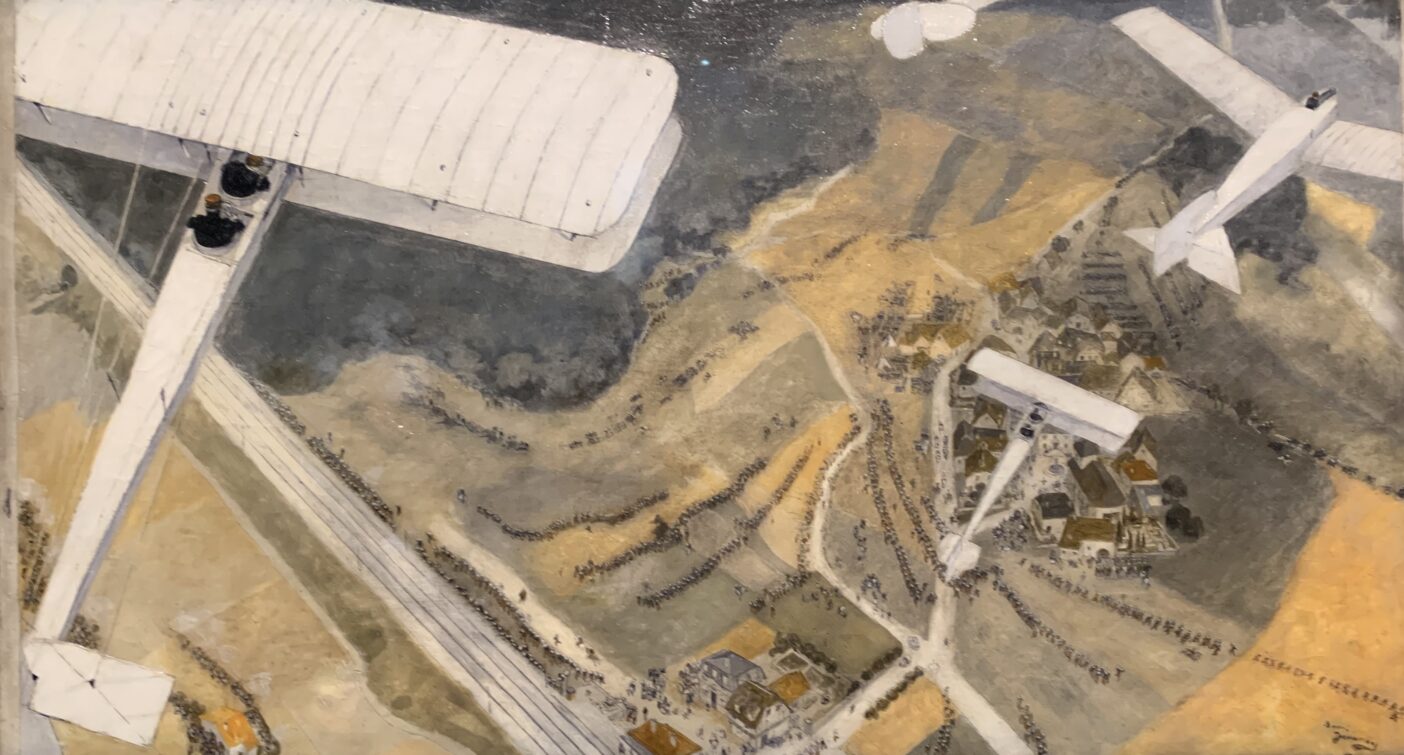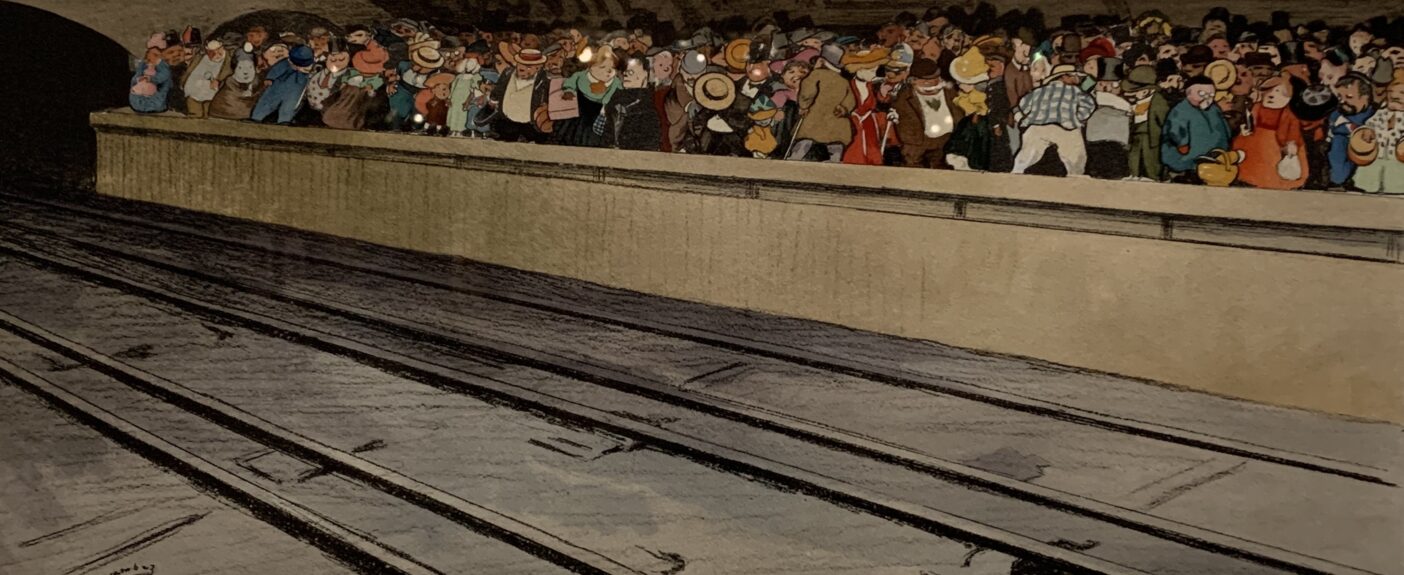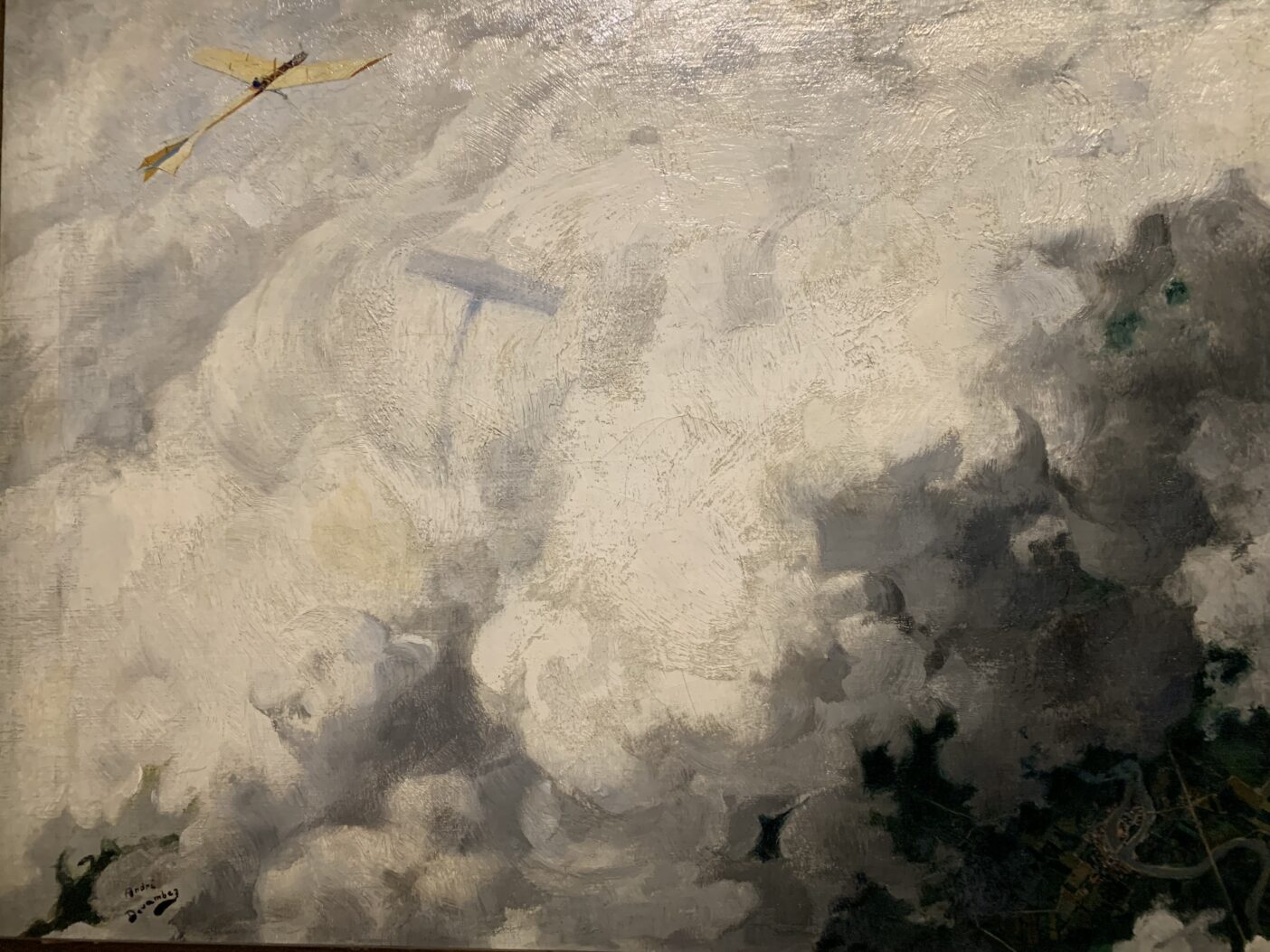Al Petit Palais di Parigi una retrospettiva su André Devambez: l’ottimismo festoso degli aerei
André Devambez racconta nei suoi quadri il senso di vertigine e l'ebbrezza dell'aviazione moderna. Al Petit Palais fino al 31 dicembre.

André Devambez racconta nei suoi quadri il senso di vertigine e l'ebbrezza dell'aviazione moderna. Al Petit Palais fino al 31 dicembre.

(English translation below)
È una mostra natalizia parigina, leggera e festosa, aperta fino al 31 dicembre. André Devambez (1867-1944) fu pittore di vita cittadina, illustratore popolare di riviste, pubblicitario che conosceva i gusti del suo vasto pubblico francese.
A questo minore il Petit Palais (che petit non è mai stato, e che ora, interamente rinnovato vale da solo la visita), è dedicata una retrospettiva che è su di lui quanto sulla belle époque.
Quadri pieni di colore e movimento, di eventi solenni e modesti – dall’esposizione universale parigina all’attesa del métro – tra i quali, c’è un filone di cui André Devambez fu tra i pionieri: la pittura dell’aviazione, la narrazione per immagini gloriose di questi veicoli che irrompevano nell’immaginario collettivo come una nuova dimensione dell’esistenza, della tecnica, del viaggio.

Dirigibili e aerei diventano per lui apparecchi amici, reincarnazioni di quella audace allegria sbandierata dalle mongolfiere, ma ben più sicuri e soprattutto veloci.
“L’unico uccello che vola al di sopra delle nuvole”, s’intitola un suo dipinto dedicato a un biplano che pare una libellula libera sopra una tempesta di nubi, e forte nei suoi quadri aerei è il senso di vertigine, la visione dall’alto dei paesaggi, ancora più sereni nel poterli dominare con uno sguardo volitivo che ricorda la lezione dei futuristi combinandola con quella del fumetto.
Dal 1934 anziché andare in pensione fu accolto nel corpo dei pittori ufficiali del Ministero dell’Aviazione, tra gli innovatori che sapevano integrare le grandi innovazioni dell’epoca nella loro tavolozza.
Ma nelle sue tele non c’è niente di pomposo né di retorico, ma solo ebrezza, velocità, trasformazione della sensibilità popolare e della capacità di sognare, tutti sospinti a un livello azzurrino, a respirare l’aria fresca dell’alta quota.
I suoi aerei e dirigibili sono quasi il contrappeso a un altro suo tema favorito, la metropolitana sotterranea e urbana.

Andrè Devambez dipinse anche la gloria delle grandi navi e il trionfo delle locomotive, ma senza pompa, perché la sua enfasi era tutta nel creare una estetica di questa nuova mobilità popolare, di questo nuovo poter viaggiare, sottoterra, sul mare, nell’aria.
Non solo pittore di una gioiosa connettività, ma anche un artista che costruisce un ponte tra l’arte e il ritmo incalzante dei viaggi, e senza paura, ma con quella fiducia e quasi quella felicità che si frantumò quando quegli ammirevoli apparecchi aerei divennero bombardieri sulle nostre città, tradendo quell’ottimismo volante col quale Devambez sapeva raccontarci il nuovo mondo e di cui abbiamo ancora bisogno.

ENGLISH VERSION
André Devambez tells in his paintings the sense of vertigo and the thrill of modern aviation. At the Petit Palais until December 31st.
This is a Parisian Christmas exhibition, light and joyful, open until December 31st. André Devambez (1867-1944) was a painter of city life, a popular magazine illustrator, and advertising who knew the tastes of his vast French public. A retrospective is dedicated to this “minor” by the Petit Palais (which has never been “petit”, and which now, entirely renovated, is worth a visit in itself) that is as much about him as it is about the belle époque.
Among those paintings full of color and movement, of solemn and modest events – from the Universal Exhibition in Paris to the waiting for the metro – there is a category of which Devambez was one of the pioneers, the aviation painting, the narration through glorious images of these vehicles that broke into the collective imagination as a new dimension of existence, of technology, of travel.
Airships and airplanes become friendly aircraft for him, reincarnations of that audacious cheerfulness flaunted by hot air balloons, but much safer and faster. “The only bird that flies above the clouds”, is the title of one of his paintings dedicated to a biplane that looks like a dragonfly free above a storm of clouds; so strong in his aerial paintings is the sense of vertigo, the serene vision of landscapes, dominated by the planes, with a strong-willed gaze that recalls the lesson of the futurists combined with that of comics. In 1934, instead of retiring, he was welcomed into the body of official painters of the Ministry of Aviation, among the ones who knew how to integrate the great innovations of the time into their palette.
However, in his canvases, there is nothing pompous or rhetorical, but only speed, the shaping of a new popular awareness, and the ability to dream, all pushed to a blue level, to breathe the fresh air of high altitude.
His planes and airships are almost the counterweight to another favorite theme of his, the underground and urban subway. André Devambez also painted the glory of the great ships and the triumph of the locomotives, and always without pomp, because his emphasis was all on creating an aesthetic of new popular mobility, of this new ability to travel, underground, on the sea, in the air.
Not only a painter of joyful connectivity but also an artist who builds a bridge between art and the pressing pace of travel, with no fear. His confidence and almost that happiness were shattered when those admirable planes became aircraft bombing our cities, betraying Devambez’s optimism with which he knew how to tell us about the new world, an “aerial” optimism that we miss today.
